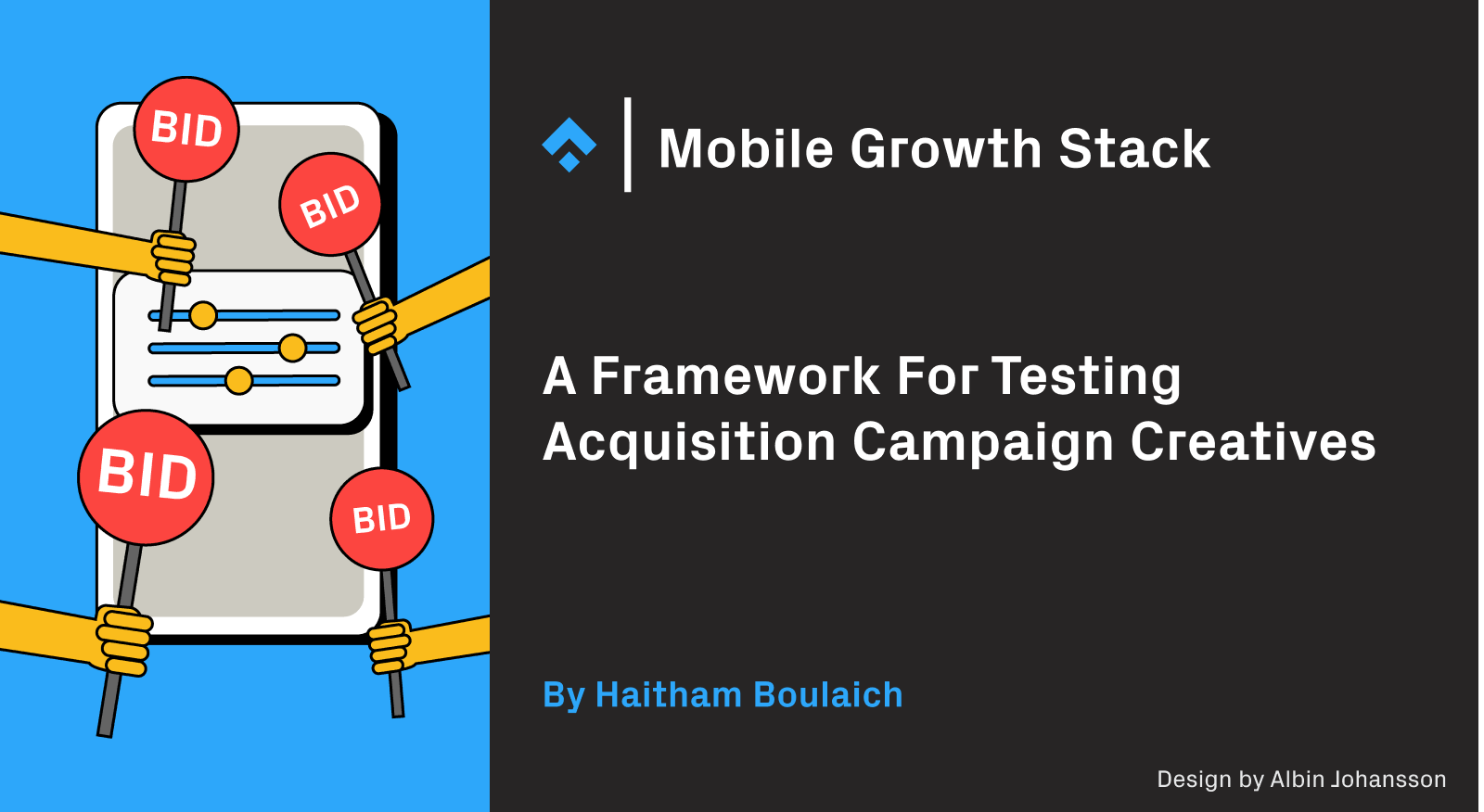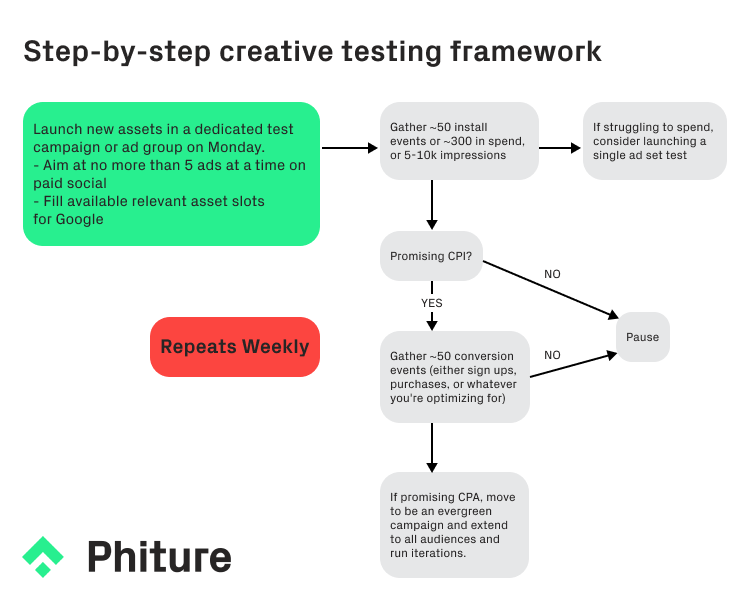 In the world of User Acquisition campaigns, ‘creative hits’ lead to further reach and ultimately an improvement in overall campaign performance. However, it’s very rare a campaign is a hit from the outset. In fact, most hits result from incremental creative testing that pinpoints successful elements that can iterated upon, and then relaunched by the Performance Marketer with confidence.
In the world of User Acquisition campaigns, ‘creative hits’ lead to further reach and ultimately an improvement in overall campaign performance. However, it’s very rare a campaign is a hit from the outset. In fact, most hits result from incremental creative testing that pinpoints successful elements that can iterated upon, and then relaunched by the Performance Marketer with confidence.
Getting started with this creative testing can be difficult, especially when the creatives are entirely new. When putting new campaign creatives live, Performance Marketers should have a clear idea of how much budget to allocate, and know what milestones a new campaign should be reaching in order to be considered a successful test. This can be easier said than done. Of course you need to spend some testing budget on your creatives to garner impressions, and ultimately assess the efficiency of your campaign, but how much?
At Phiture, we’ve developed a simple creative testing framework that can be applied as a starting point for every new round of creative testing, and is seen here in the form of a flowchart. The aim is to guide the optimization of creative testing and show at which points you should make interventions and adjustments to bids.
Understanding your Performance Marketing campaign flow
The flow chart below outlines how to monitor a Performance Marketing campaign’s trajectory over a period of time. A Performance Marketing campaign is a dynamic and oftentimes intuitive undertaking, but there are rules of thumb and touch points that marketers can use to stay on track.
For example, upon launch, it’s important you have no more than five ads at a time running on social media. The crucial moment when you can start to assess the performance of a campaign is when an ad set has received an average of 50 install events or ~300 in spend, or 5-10k impressions.
Points to consider with the flow chart
- This flowchart doesn’t taking into account testing on weekends, as this is usually considered downtime for most employees. That’s why we recommend proceeding with caution if deciding to make substantial bid increases on Thursdays or Fridays.
- If you’re running a separate campaign for testing (as opposed to Evergreen), make sure you move your successful tests to Evergreen.
- If your bid proves successful and it’s generating a creative hit, make sure you spend a significant amount of the total ad spend (+20%) on it. You can find out more about creative hits, and a systematic approach to creative reporting here.
- For paid social campaigns, its advisable to limit the number of creative assets being tested at the same time in a single ad set. Budget is an important factor here, as the budget per asset will be limited if the number of assets is higher. For effective creative testing, it’s well worth concentrating on a lower number of assets and making sure they reach significance.
Before you go
- Need advice on your creative testing for user acquisition campaigns? Reach out to our team here.
- We recently ran test automations with Apple Search Ads after hypothesizing that automation would help with supporting daily check-ins, controlling performance, and reducing the time spent on optimizations tasks. The test was a resounding success and you can find out more here.
- The Performance Marketing Creative Playbook. Scoring creative hits is a crucial aspect of Performance Marketing campaigns. At Phiture we don’t leave this to chance. We rely on conceptual frameworks to channel our creativity, and systematic testing to ensure incremental results that can then be scaled up.













